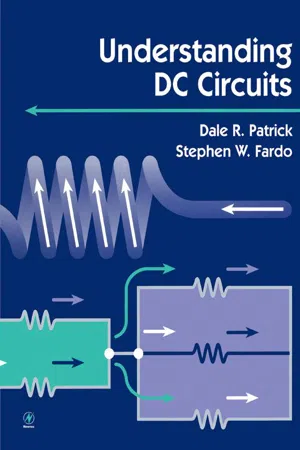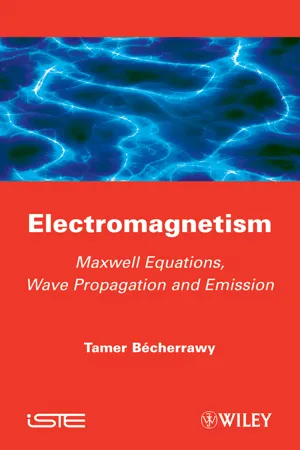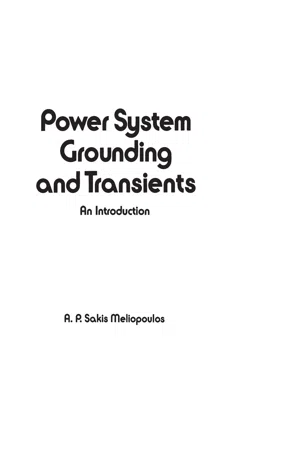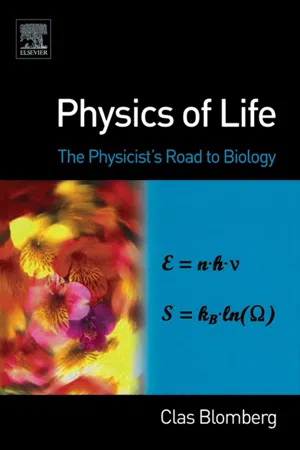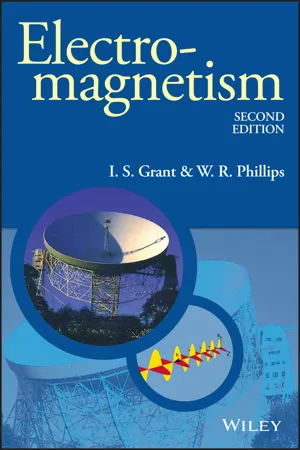Physics
Inductance
Inductance is a property of an electrical circuit that opposes changes in current. It is caused by the magnetic field generated by the flow of current through a conductor. Inductance is measured in henries and is a key factor in the behavior of electrical components such as inductors and transformers.
Written by Perlego with AI-assistance
Related key terms
Related key terms
1 of 4
Related key terms
1 of 3
10 Key excerpts on "Inductance"
- eBook - ePub
- Dale Patrick, Stephen Fardo(Authors)
- 1999(Publication Date)
- Newnes(Publisher)
L ) The property of a circuit to oppose changes in current caused by energy stored in a magnetic field.Inductive circuit A circuit that has one or more inductors or has the property of Inductance, such as an electric motor circuit.Inductor A coil of wire that has the property of Inductance and is used in a circuit for that purpose.Mutual Inductance (M )A state that occurs when two coils are located close together, so that the magnetic flux of each coil affects the other in terms of its Inductance properties.Time constant (RC )The time required for the voltage across a capacitor in an RC circuit to increase to 63% of its maximum value or decrease to 37% of its maximum value; time = L/R.Working voltage A rating of capacitors that is the maximum voltage that can be placed across the plates of a capacitor without damage.Inductance
When energized with dc voltage, a coil produces a magnetic field around itself. DC current flow produces a constant magnetic field around a coil. When the same coil is supplied with ac voltage, the constantly changing ac current produces a constantly changing magnetic flux. This changing flux sets up a magnetic field with a constantly reversing polarity and changing strength. It also induces a counterelectromotive force (CEMF) or counter voltage. This counterelectromotive force opposes the source voltage. CEMF limits current flow from the source.The opposition to the flow of ac current by a magnetic field is called Inductance (L ). The opposition to current flow of an inductive device depends on the resistance of the wire and the magnetic properties of the circuit. The opposition caused by the magnetic effect in ac circuits is called inductive reactance (XL). XLvaries with the applied frequency and is found with the formulaXL = 2π× f × L, where 2π = 6.28, f is the applied frequency in hertz, and L is the Inductance in henrys. The basic unit of Inductance is the henry (H). Inductance in ac circuits is discussed in a companion text—Understanding AC Circuits. - No longer available |Learn more
- Robert A. Pelcovits, Joshua Farkas(Authors)
- 2023(Publication Date)
- Barrons Educational Services(Publisher)
inductors. A useful way to think of inductors is to imagine that they are trying to stabilize the amount of current flowing through a circuit by creating an EMF that opposes changes in current. Now that we have a qualitative understanding of inductors, we’re ready for a more rigorous quantitative exploration of inductors.TIP Induction occurs even when there is only one circuit.Example 16.1 The Self-Inductance of a SolenoidA solenoid of length l with n turns per length and radius R experiences a changing current dI/dt. Calculate the magnitude of the induced EMF in the solenoid.The magnetic field within the solenoid is given by Calculating the magnetic flux,SolutionQuantitative Definition of Self-Inductance
As we might expect, the induced EMF is proportional to the rate of change in the current. This proportionality constant is called self-Inductance.The Inductance of an inductor, L, is a property of the geometry of the inductor itself. For example, from Example 16.1 , you can verify that the Inductance of a solenoid is given by the following expression that involves only physical constants and the dimensions of the inductor: L = μ0 πn2 lR2 .The SI unit for Inductance is the henry (H), given by the equation 1H = 1 (V⋅s)/A.Energy Stored In an Inductor
As we increase the current through an inductor, an EMF is induced in the inductor; that is, a potential difference (voltage) develops across the two terminals of the inductor that opposes increases in current. Therefore, increasing the current in an inductor involves driving current against this potential difference, which requires energy. Where does this energy go? It is stored in the inductor. Later on, if the battery wears out and the current begins to decrease, a potential difference develops across the inductor that pushes the current in the same direction as the battery in an effort to oppose the decrease in current. At this point, the energy stored in the inductor is being depleted to maintain the current. - eBook - ePub
- David Wyatt, Mike Tooley(Authors)
- 2018(Publication Date)
- Routledge(Publisher)
transformer, which we shall meet later.Figure 1.31 Mutual InductanceFigure 1.32 A real inductor has resistance as well as Inductance1.6.4 Inductors
Inductors provide us with a means of storing electrical energy in the form of a magnetic field. Typical applications include chokes, filters, and frequency selective circuits. The electrical characteristics of an inductor are determined by a number of factors including the material of the core (if any), the number of turns, and the physical dimensions of the coil.In practice every coil comprises both Inductance and resistance and the circuit of Fig. 1.32 shows these as two discrete components. In reality the Inductance, L , and resistance, R , are both distributed throughout the component but it is convenient to treat the Inductance and resistance as separate components in the analysis of the circuit.Key point An e.m.f. is produced when the magnetic flux passing through an inductor changes.Figure 1.33 A selection of inductors with values ranging from 100 nH to 4H and current ratings ranging from 0.1 A to 10 AKey point The current induced in a conductor always opposes the change that produces it.Test your understanding 1.8- A 1.5 m length of wire moves perpendicular to a magnetic flux field of 0.75 T. Determine the e.m.f. that will be induced across the ends of the wire if it moves at 10m/s.
- An e.m.f. of 30V is developed across the terminals of an inductor when the current flowing in it changes from zero to 10 A in half a second. What is the value of Inductance?
1.7 Alternating current and transformers
Direct currents are currents which, even though their magnitude may vary, essentially flow only in one direction. In other words, direct currents are unidirectional. Alternating currents, on the other hand, are bi-directional and continuously reversing their direction of flow, as shown in Fig. 1.34 - eBook - ePub
- Clay Rawlins(Author)
- 2000(Publication Date)
- Newnes(Publisher)
self–Inductance .Figure 8.14 A Voltage Across a Coil is a CEMFRecall that earlier it was stated that a coil must be composed of turns of wire in which all turns are insulated one from the other. It should be clear now why this is true. If the turns of wire are not electrically separate, then the coil would not act as an inductor, but as a conductor.Units of Inductance
The amount of Inductance in a coil of wire is measured in henrys or millihenrys (thousandths of a henry). Millihenrys is abbreviated mH.Physical Properties that Determine Inductance of a Coil
The Inductance of a coil can be determined by this equation:(8–2)where This equation is valid for a single–layer coil only, but it can be used to help you understand the physical properties of any type of coil.In the equation, L represents the magnetic flux linkages that connect one part of a coil to the next part, causing the property of Inductance. The permeability of the core material is μ, the ability of a material to conduct magnetic lines of force, also called magnetic flux. Together, μ and μo represent a constant.From this equation and, as shown in Figure 8.15, you can see that if the number of turns of wire is increased, the Inductance of the coil will increase by the square of the number of turns. As shown in Figure 8.16, a coil with a large cross-sectional area will have a greater value of Inductance than one of a smaller cross–sectional area. As shown in Figure 8.17, - eBook - ePub
Bebop to the Boolean Boogie
An Unconventional Guide to Electronics
- Clive Maxfield(Author)
- 2008(Publication Date)
- Newnes(Publisher)
induces an effect in the second. Well, electrical Inductance is just like this, but different.What, you want more? Oh well, how about this then: a difference in electrical potential between two ends of a conducting wire causes current to flow, and current flowing through a wire causes an electromagnetic field to be generated around that wire (Figure 3.11 ).Figure 3.11. Current flowing through a wire generates an electromagnetic field.
Correspondingly, if a piece of wire is moved through an externally generated electromagnetic field, it cuts the lines of electromagnetic flux, resulting in an electrical potential being generated between the two ends of the wire (Figure 3.12 ).Figure 3.12. A conductor cutting through an electromagnetic field generates an electrical potential.
Engineers sometimes make use of components called inductors, which may be formed by winding a wire into a coil around a rod of iron or some other ferromagnetic material (the wire would be coated by a layer of insulating material to prevent coil windings forming electrical connections with each other or with the rod). When a current is passed through the coil, the result is an intense electromagnetic field (Figure 3.13 ).Figure 3.13. Inductor: Component and symbol.
Now consider a simple circuit comprising a resistor, an inductor, and a switch. Initially the switch is in the open (off) position, the inductor voltage vind is at vpos volts, and no current is flowing [Figure 3.14(a) ].Figure 3.14. Resistor-inductor-switch circuit.
As the inductor is formed from a piece of conducting wire, one might expect that closing the switch at time t0 [Figure 3.14(b) ] would immediately cause vind to drop to 0 volts, but this is not the case. When the switch is closed (turned on) and current begins to flow, the inductor’s electromagnetic field starts to form. As the field grows in strength, the lines of flux are pushed out from the center, and in the process they cut through the loops of wire forming the coil. This has the same effect as moving a conductor through an electromagnetic field and a voltage differential is created between the ends of the coil. This generated voltage is such that it attempts to oppose the changes causing it. This effect is called Inductance, the official unit of which is the henry.[11 - eBook - ePub
Electromagnetism
Maxwell Equations, Wave Propagation and Emission
- Tamer Becherrawy(Author)
- 2013(Publication Date)
- Wiley-ISTE(Publisher)
.A) Concept of InductanceThe experiment shows that an emf is induced in a circuit if it's current varies. This self-induction is due to the variation of the flux of its own magnetic field through the circuit itself. This effect is important in the case of an alternating current and in the case of a direct current that is turned on or turned off.The field B produced by a circuit at each point r is proportional to its current and so is the flux Ф of this field through the circuit itself, hence[8.29]It may be easily verified that L is a positive quantity called self-Inductance of the circuit (or just Inductance , for short). It depends only on the geometrical form of the circuit. If the intensity I of the circuit varies, Ф varies, and this induces an e.m.f.[8.30]This induced emf is superposed to the other emf o and, according to Lenz’s law, it opposes the variation of Φ (thus, of I ): if I increases , is negative; thus, it produces a current in the opposite direction. On the contrary, if I decreases , is positive; thus, it produces a current in the same direction. For instance, if a direct current is switched on, the self-induction opposes its instantaneous set up; so,I increases gradually from 0 to its final value. Similarly, if the current is turned off, the self-induction opposes its instantaneous vanishing; so I decreases gradually to 0 (see section 8.6 ).B) Calculation of the InductanceWe may consider the Inductance L as the mutual Inductance of two circuits that coincide (Figure 8.3a ). The expression [8.27 ] becomes[8.31]However, this expression is not easy to use and it may diverge in the case of a thin circuit, as the denominator - eBook - ePub
- Jo Verhaevert(Author)
- 2024(Publication Date)
- Routledge(Publisher)
Chapter 5 Electromagnetism
DOI: 10.1201/9781003308294-5Learning Outcomes This chapter concerns the principles and laws governing electromagnetic induction and the concepts of self and mutual Inductance. On completion of this chapter you should be able to use these principles to:- Understand the basic operating principles of motors and generators.
- Carry out simple calculations involving the generation of voltage, and the production of force and torque.
- Appreciate the significance of eddy current loss.
- Determine the value of inductors, and apply the concepts of self and mutual Inductance to the operating principles of transformers.
- Calculate the energy stored in a magnetic field.
- Explain the principle of the moving coil metre and carry out simple calculations for the instrument.
5.1 Faraday’s Law of Electromagnetic Induction
It is mainly due to the pioneering work of Michael Faraday, in the nineteenth century, that the modern technological world exists as we know it. Without the development of the generation of electrical power, such advances would have been impossible. Thus, although the concepts involved with electromagnetic induction are very simple, they have far-reaching influence. Faraday’s law is best considered in two interrelated parts:- The value of emf induced in a circuit or conductor is directly proportional to the rate of change of magnetic flux linking with it.
- The polarity of such an emf, induced by an increasing flux, is opposite to that induced by a decreasing flux.
The key to electromagnetic induction is contained in part 1 of the law quoted above. Here, the words ‘rate of change’ are used. If there is no change in flux, or the way in which this flux links with a conductor, then no emf will be induced. The proof of the law can be very simply demonstrated. Consider a coil of wire, a permanent bar magnet and a galvanometer as illustrated in Figures 5.1 and 5.2 - eBook - ePub
Power System Grounding and Transients
An Introduction
- A.P. Sakis Meliopoulis(Author)
- 2017(Publication Date)
- Routledge(Publisher)
Eq. (2.2) states that the Inductance equals the induced voltage divided by the time derivative of the electric current. In our conceptual discussion of the Inductance, we neglected a very important consideration. Specifically, we neglected the path of return of the electric current i(t). The path of return drastically affects the induced voltage dv(t), and thus the Inductance of the conductor. This point will be clarified further in our discussion of specific transmission line configurations.A transmission line is a complicated structure, comprising more than one conductor. Our objective in this chapter is to characterize each conductor with its Inductance and also any pair of conductors with a mutual Inductance.2.2 Magnetic Field of an Infinitely Long Circular Conductor
In this section we introduce the basic concepts by considering the magnetic field of an infinitely long conductor of circular cross section. For simplicity, assume that the conductor material is nonmagnetic. In other words, the permeability of the conductor material is μ0. A cross section of the conductor is shown in Fig. 2.2a . The radius of the conductor is a. Further assume that the conductor carries an electric current i(t), which is uniformly distributed in the cross section of the conductor (i.e., constant current density). Under these assumptions, it is relatively easy to compute the magnetic field of the configuration and subsequently the Inductance of the line.Because of the existing cylindrical symmetry, the magnetic field intensityH ¯at a point A, illustrated in Fig. 2.2a , will be perpendicular to the segment OA and the magnitude will be constant on the circular contour with center Ο and radius. In other words, the magnitude of the magnetic field intensity, H, is a function of the radiusO ¯A ¯only [i.e., H(r)]. H(r) is computed with a direct application of Ampére’s law on the described configuration. There are two cases.O ¯A ¯= rFIG. 2.2 - eBook - ePub
Physics of Life
The Physicist's Road to Biology
- Clas Blomberg(Author)
- 2007(Publication Date)
- Elsevier Science(Publisher)
For completeness, we here take up the relations between magnetic and electric fields, although they probably do not play any important roles in biological processes. They are important in certain experimental techniques, which are not taken up here. Electromagnetic radiation is certainly an effect of these relations, and that is certainly very relevant.1. Any current provides a magnetic field. For a current I along a straight line, there is a magnetic field circulating the current. The field at a distance r is given by Ampere’s law:H =(5.15)1( 2 π r )(5.15)As the D -field is directly related to charges in electrostatics, the H -field is directly related to a current.2. Induction : A magnetic field that varies with time gives rise to an electric field and thus a voltage. A typical situation describes a conductor in the form of a loop that surrounds a homogeneous alternating magnetic field B through an area A. Then, there is a voltage(5.16)V ind= - Ad Bd tThese effects are used, in many applications, for instance to generate electric currents and in transformers to change voltages.(5.16)3. The effects combine in what is called self-induction: According to point (1), an alternating current gives rise to an alternating magnetic field, which according to point (2) provides a voltage. Together, the effects give rise to a self-induction voltage:(5.17)V ind= - Ld Id t(5.17)The proportionality constant L is called Inductance. Its actual value depends on the geometry of the conductor. Note that it is the H that is related to the current, while the induction voltage is given by the B -field. If no strong magnetic material is present, the Inductance is proportional to μ 0 (=4π × 10−7 ), the constant that gives the proportionality between B and H in free space: B = μ 0 H. This means that the Inductance normally attains a small number.If, as sometimes proposed, a weak alternating magnetic field shall have any influence on an organism, it should most reasonably be due to an induction effect. The effects are small, and it is not clear how they could lead to large effects. Suggested relevant magnetic fields are around 10−4 T. If it has a frequency of 50 Hz, it should be multiplied to a factor 50 × 2π. - eBook - ePub
- I. S. Grant, W. R. Phillips(Authors)
- 2013(Publication Date)
- Wiley(Publisher)
RI , henceThe total workWBdone by the battery in raising the current to the valueITis given byThe second term on the right-hand side of this equation represents the irreversible conversion of electrical energy into heat. The first term is an amount of energy stored in the Inductance after time T , which can be recovered when the magnetic field is switched off. If at time T the battery is removed and replaced by a short circuit, at all times later than T the following equation is obeyed:Solving this equation for the current I with the initial condition that at time t = T , the current I =The current decays away exponentially and dissipates energy as heat in the resistor. The total energy appearing as heat after the removal of the battery is given by the integralIT, we haveand the heat energy appearing is equal to the energy stored in the Inductance. The energy may be considered to be stored reversibly in the magnetic field caused by the current. An Inductance is thus a device for storing magnetic energy, analogously to the manner in which a capacitance stores electrostatic energy.6.3.2 The total magnetic energy of a system of currents
In the same way as the total energy stored in an electrostatic field can be expressed in terms of the electric fields E and D, the total energy stored in a magnetic field can be related to the magnetic fields B and H. In order to determine this relation a necessary step is to calculate the total magnetic energy stored in a system of circuits through which steady currents pass.Suppose there are n stationary circuits and that at an instant of time t the current through the i th circuit isIiand the magnetic flux through the circuit is Фi . The instantaneous induced e.m.f. in the ith circuit is equal to – dΦi /dt and the rate at which work is being done against this induced e.m.f. by the battery supplying the currentIi
Index pages curate the most relevant extracts from our library of academic textbooks. They’ve been created using an in-house natural language model (NLM), each adding context and meaning to key research topics.
Explore more topic indexes
Explore more topic indexes
1 of 6
Explore more topic indexes
1 of 4
